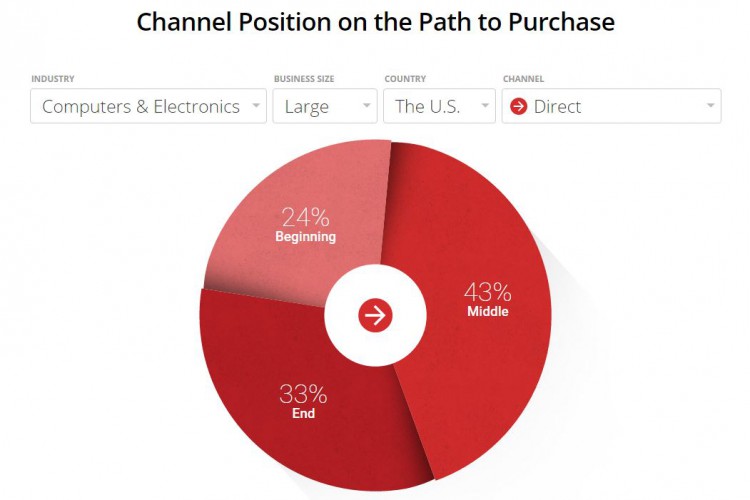Browsing through my Google+ feed recently, I stumbled upon an interactive web page from Think with Google displayed on the Google Small Business page. I like interactive web pages. They’re fun to use, and they are effective examples of content marketing. So, I am always impressed when I find really cool ones. This particular interactive web page is part of the Tools section of Think with Google, and it’s called The Customer Journey to Online Purchase. The tool also links to a colorful, fourteen-page document, also from Google, called Measure What Matters Most.
According to Google, the page, ” … includes transactional data collected from 42 thousand Google Analytics properties with Ecommerce tracking enabled, across 8 countries, over an 11 month time period (purchase paths that concluded on 45 randomly selected dates from October 2013 – September 2014). ”
The tool begins by letting users select a company size (small, medium or large), an industry (e.g., auto, books, or computers) and region (e.g., U.S. or Germany). Based on this selection, the tool visually displays different marketing channels a customer typically goes through along their purchase path and at what stage of the path they go through them.
For example, customers of a large travel company in the U.S. typically start off with a click on a display ad, followed over time by social interaction, and then a click on a generic paid search ad. From there, the customer might return to the travel company’s website through a referral site, organic search, email, or a branded paid search ad. Finally, the customer will pay a direct visit to the company’s site before completing a purchase.

On the other hand, for a large Internet company, the path to purchase most often begins on social media. This visit is followed by one through display and generic paid search ads. Then comes referrals, organic search and paid branded search. An email is the penultimate step in this journey, which is completed, once again, by a direct visit.

Of course, not every customer journey ends with a direct visit to a company’s site — a significant number of customers might pay a direct visit in the beginning or middle of their journey. The next portion of the web page lets users investigate where each marketing channel tends to occur in the customer journey using the three qualifiers of industry, region and company size. In fact, a significant amount of direct visits for large U.S. computer companies occur in the middle of the customer journey (43 percent).

Go ahead, and visit this page yourself. Play around with it, and compare its findings with your internal data to see how your business measures up.